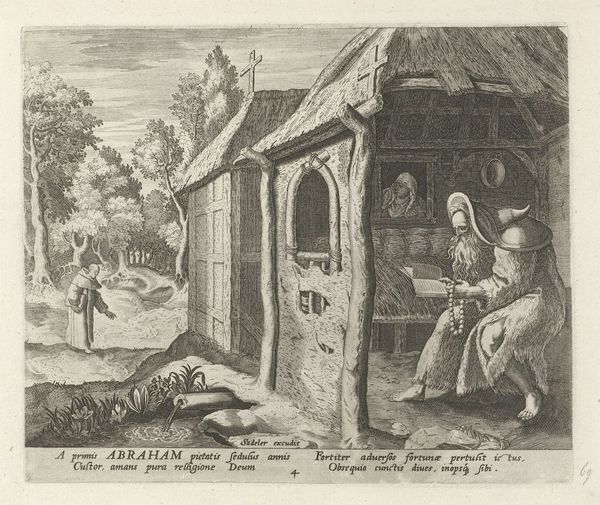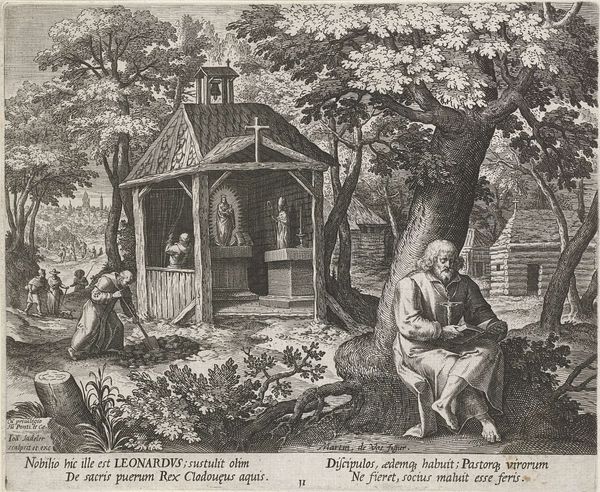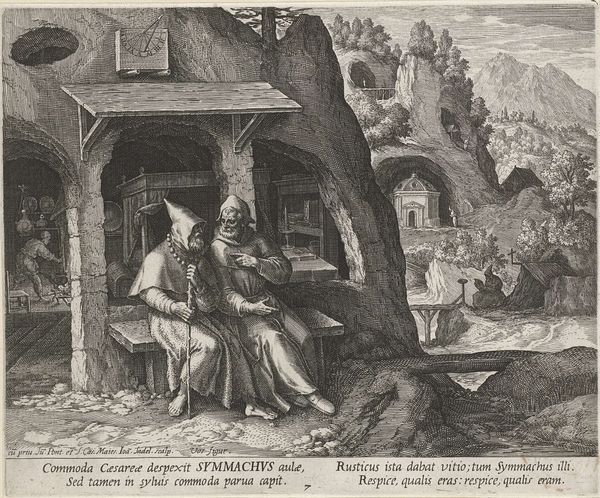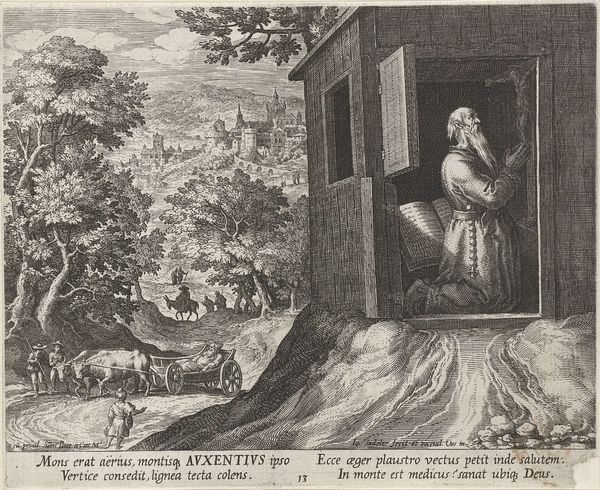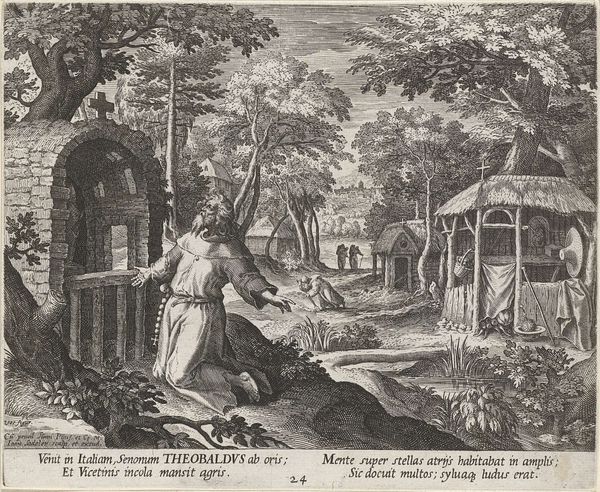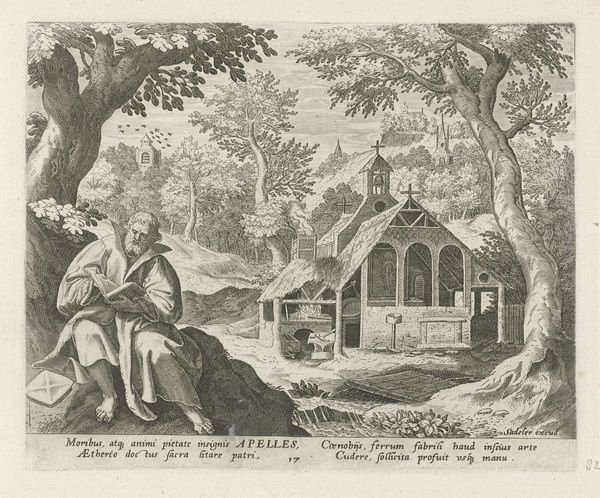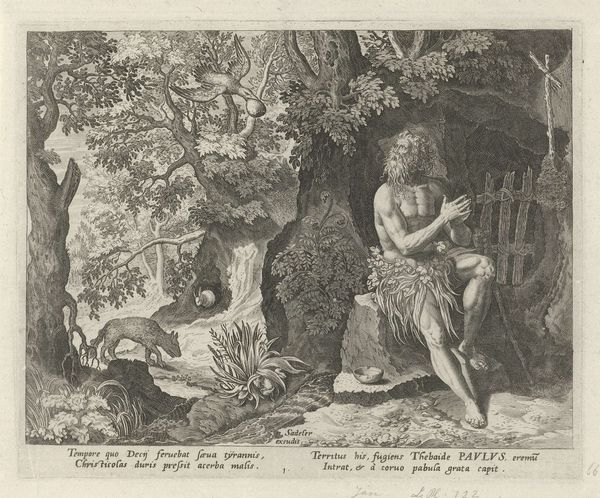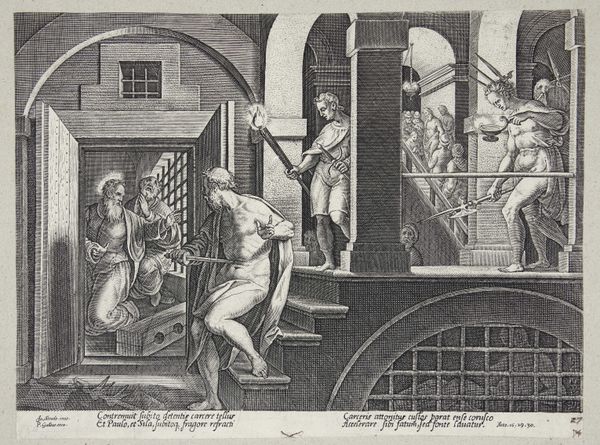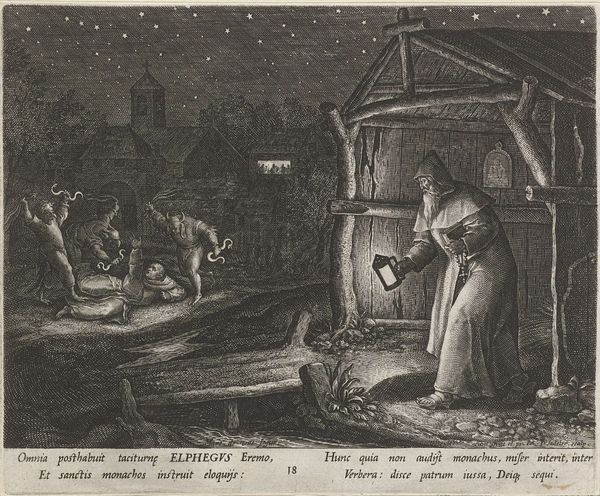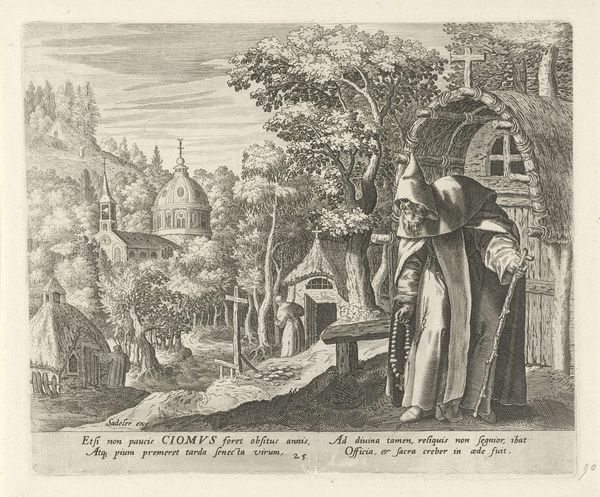
#
light pencil work
#
quirky sketch
#
pencil sketch
#
old engraving style
#
sketch book
#
personal sketchbook
#
sketchwork
#
forest
#
pen-ink sketch
#
sketchbook drawing
#
sketchbook art
Dimensions: height 168 mm, width 208 mm
Copyright: Rijks Museum: Open Domain
This engraving of Saint Maglorius as a hermit was created by Johann Sadeler around 1600. The composition depicts the saint kneeling in prayer, receiving the Eucharist from an angel, and gives us a sense of the religious practices of the period. Sadeler was working in a Europe still deeply affected by the Reformation. In this climate, religious imagery played a crucial role in shaping and reinforcing faith, and engravings such as this would have been widely circulated. The image of Saint Maglorius, living in solitude and receiving divine communion, speaks to the Catholic emphasis on sacraments and the importance of saints as intermediaries to God. We can also see how the setting of the hermit's cell reflects a broader cultural fascination with asceticism. To fully understand this work, we can consult religious texts, historical accounts of the Reformation, and studies of print culture in the 16th century. These sources reveal the complex interplay between art, religion, and society in early modern Europe.
Comments
No comments
Be the first to comment and join the conversation on the ultimate creative platform.

